Barbara Zulant Kiefer |
|
My first presentation for Barbara’s class was on the Brambly Hedge series. I had read the books before (in Spanish), but she encouraged me to look deeper: to put the child’s eye at the center; to see how color, and perspective, and composition convey meaning; how images and words combine to create this wonderful world for us to enter and explore as we read. We later went together on a study trip to Britain, and it was hard not to see glimpses of Brambly Hedge as we drove across the countryside and discussed fantasy books.
I traveled all the way from Colombia to study with Barbara, and she not only guided me along the way, but also made me feel right at home. |
Knock at a Star: A Child’s Introduction to Poetry by X. J. Kennedy and Dorothy M. Kennedy
Submitted by Lisa Pinkerton
|
As a doctoral student at The Ohio State University, I had the privilege of co-teaching the Poetry for Children course with Barbara. I gained a deep appreciation for children’s poetry. Each week, Barbara brought a stack of books to class featuring a wide range of poetry tones, topics, and themes, from serious to silly, sports to school, and seasons to science. We immersed ourselves in poetry. Barbara believed that poetry for children “should reflect the real emotions of childhood,” rather than being “coy, nostalgic, or sentimental.” (1) Many of the best children's poems feel joyful, sad, angry, or fanciful - all the emotions that real children experience. This semester, I’m teaching Poetry for Children and I’m so grateful that Barbara’s poetic sensibility has left its indelible mark on the course and on my teaching.
|
Where the Wild Things Are by Maurice Sendak
Submitted by Melissa Wilson
|
The Merriam Webster Dictionary’s changes the spelling to picture-book.
Google puts a blue line under the word. Word puts the dreaded red squiggle under it. I’m not sure how Adobe Acrobat feels about its spelling. But I do know how Barb Kiefer felt. It was always one word—no space, no hyphen—just one word. When I asked her why she spelled the word that way, she was very clear. A picturebook has text and illustrations that amplify each other; they don’t stand alone. And then she would pull out a picturebook (my favorite example was Where the Wild Things Are) and show you how it worked. There was no space between the pictures and the book’s text. Picturebook—now every time I get the red squiggle or blue line or spell checked, I smile and remember Barb! |
The Potential of Picturebooks: From Visual Literacy to Aesthetic Understanding by Barbara Z. Kiefer
Submitted by Trish Bandré
|
While studying at The Ohio State University, Janet Hickman, my adviser, recommended Barbara’s book. I had always been drawn to picturebooks and was compelled to learn the “why” as well as the “what” of this unique art form. This book opened my eyes in numerous ways and gave me the words to name and describe what I had loved about picturebooks but didn’t know how to express. A few years later, Dr. Kiefer joined the faculty at OSU, and I was fortunate enough to have her on my dissertation committee. I will always be grateful for her wisdom and insight.
|
The Wall in the Middle of the Book by Jon Agee
Submitted by Kathy G. Short
|
One of Barb’s major contributions to the field was her book on The Potential of Picturebooks: From Visual Literacy to Aesthetic Understanding (1995). She argued that a picturebook is a unique art object in which the images and words combine in a transformative way, so the reader comes away with more than the sum of the parts. Her own love of art and background in the field of art came together with her passion for children’s books to challenge the rest of us to explore the intersection of art and picturebooks in deeper ways. She enjoyed picturebooks that used the design of the book in meaning-making as occurs in The Wall in the Middle of the Book by Jon Agee, where the gutter is an essential element of the story.
|
Shapes, Lines, and Light: My Grandfather’s American Journey by Katie Yamasaki
Submitted by Jongsun Wee
|
It’s no secret that Dr. Kiefer loved picturebooks. She had so much respect for illustrators. Dr. Kiefer emphasized the interdependence of text and pictures in our class at The Ohio State University. She guided us to pay attention to illustrations and think about why the illustrator made certain choices of colors, shapes, lines, and light. In class, we enjoyed finding information hidden in the illustrations. I am forever grateful to Dr. Kiefer for opening the door of the picturebook world to me. I will keep sharing her love of picturebooks with my students.
|
Make Way for Ducklings by Robert McCloskey
Submitted by Cynthia A. Tyson
|
The Potential of Picturebooks: From Visual Literacy to Aesthetic Understanding, was not wisdom at the top of the museums of art mountains, but in one of my children's literature courses, was Barbara, holding open the 1942 Caldecott winner Make Way for Ducklings so gently said, “Isn’t this just beautiful? We should always explore the potential of the picturebook as an art object.” And it is still true, no matter how many books I read—when I go out into the world of children’s literature, I always open my eyes and heart wide for the aesthetic appreciation of the picture book as a work of art.
|
The Mountains of Tibet by Mordicai Gerstein
Submitted by Denise Dávila
|
Prior to studying with Dr. Kiefer, I loved children’s literature. However, I was not attuned to engaging with picturebooks as aesthetic art objects in and of themselves. I remember one evening in which Barbara walked our class through each of Gerstein’s illustrations of The Mountains of Tibet, which School Library Journal describes as “a beautifully gentle look at one human being dealing with life’s choices and possibilities'' via the journey of a Tibetan woodcutter’s death and reincarnation. Because of Barbara, I came to love this book and to appreciate how illustrators’ use of shape and white space advance the story.
|
Blue: A History of the Color as Deep as the Sea and as Wide as the Sky by Nana Ekua Brew-Hammond, illustrated by Daniel Minter
Submitted by Mary Ann Cappiello
|
Taking “The Art of the Picturebook” with Barbara at Teachers College deepened my understanding of the picturebook as both an art form and a teaching tool. Barbara taught me how the art in a nonfiction picturebook - the lines, shapes, and colors; the art historical references; the choice of medium - all work together to convey information to the reader and elicit an emotional response within the reader. In Blue, this year’s Orbis Pictus winner, illustrator Daniel Minter uses contrasts: close-ups and panoramas, warm colors and shades of blue, varying lines and shapes. These all deepen readers’ understanding of and emotional connections to the color blue across different cultural contexts, time periods, and technologies.
|
Yasmin the Painter by Saadi Faruqi, illustrated by Hatem Aly
Submitted by Caitlin L. Ryan
|
One day while I was a graduate student, a conversation with Dr. Kiefer and others turned to nurturing children’s artistic abilities. Barb was frustrated that classrooms too often limited children’s art to basic materials like pencils and crayons on small pieces of paper. She said, passionately, “You’ve got to give them measles!” We were very confused…until we realized she’d said EASELS. Now that sounded like the Barb Kiefer we knew! The momentary misunderstanding was something we laughed about for years, and its message stuck with me. Barb saw every child as an artist. She knew children could see and create in ways that could express ideas about the world and teach us as adults in the process. She’s the reason the covers of Language Arts (2) featured children’s art from 2007-2010, the reason I teach about arts-based responses to literature in my courses, and the reason my son has an easel in his playroom now.
|
Language Arts by National Council of Teachers of English
Submitted by Laurie Katz
|
Barb and I came into the Department of Teaching & Learning at the same time – 2003. I remember being at a faculty meeting before I officially started where I learned that Barb was also coming to the department. Everyone was extremely excited to have someone of her caliber as the Charlotte Huck Chair. Before I started at OSU in Integrated Teaching & Learning, I really didn’t know much about the esteemed reputation of the children’s literature faculty at the university. It wasn’t until I became one of the Language Arts co-editors with Barbara that I learned about the field of children’s literature. Her love, passion, enthusiasm, and expertise permeated throughout the group of editors. One of her roles was being in charge of the 3rd issue of each volume, which was specially geared towards children’s literature. Many of the covers of these issues and others came from Barb’s network, including the two issues above.
|
Hiroshima No Pika by Maruki Toshi
Submitted by Hilary Brewster
|
When I was a doctoral student in the Literature for Children and Young Adults program at The Ohio State University, I was more on the YA side than the kid lit side, having previously taught high school English. However, our program luckily required us to take various children’s literature courses with Dr. Barbara Kiefer. In one of them, she shared with us the heartbreaking and exquisite picturebook Hiroshima No Pika, an account of the nuclear annihilation of the titular city. Not your “typical” children’s book, to be sure. With this lesson and others, Dr. Kiefer taught us that it is not only recommended, but necessary, to integrate potentially troubling literature into classrooms of all levels in order to have conversations about empathy, community, and, subsequently, vulnerability. I have shared this book with my upper-level college students who often cite it as one they, too, remember years later.
|
Adventurous Women: Eight True Stories About Women Who Made a Difference by Penny Colman
Submitted by Evelyn Freeman
|
Barbara and I shared a commitment to increasing the awareness and appreciation of quality nonfiction for children. In February 2006, Barbara organized a symposium at OSU on nonfiction, which featured the author Penny Colman. Penny autographed this book for me at the symposium and wrote a long inscription that referred to my advocacy for nonfiction. Barbara was so knowledgeable about all genres of children’s literature. I will miss her and our wonderful discussions about books.
|
El Deafo by Cece Bell
Submitted by Sara Kersten-Parrish
|
Behind her ubiquitous rolling cart laden with books, I would frequently see Barb grab a title, thrust it at someone and say, “I know you’ll love this.” She took great value in knowing what her students would like to read. Barbara handed El Deafo to me, looked me in the eye, and said, “This book is important for you.” And, it was. When reading El Deafo, I felt seen for the very first time as someone who is deaf like the protagonist and author. Barbara saw me and saw the connection a book could bring.
|
The Ask and the Answer from the Chaos Walking series by Patrick Ness
Submitted by Michele D. Castleman
|
Dr. Kiefer was the queen of sharing books. When I first met her on a visit to OSU, I was amazed by how filled her office was with books. Throughout my time in the program, Dr. Kiefer hooked me on multiple authors and series, of which the Chaos Walking series stands out the most in my memory. When the second book came out in Great Britain, Dr. Kiefer ordered a copy from abroad so she could read The Ask and the Answer as soon as possible. She happily shared her beautiful, British hardcover with a long line of students one-by-one. As a teacher, I have worked to embody Dr. Kiefer’s spirit of creating excitement over young adult and children’s literature. My office is overrun with books. I joke with my colleagues that someday I will die happy under a pile of my fallen books. But, more importantly, I have followed her example and happily share personal copies of my own books with students.
|
Miss Rumphius by Barbara Cooney
Submitted by Ann Neely
|
I first met Barbara Kiefer when we were both participating in a children’s literature conference in Glasgow, Scotland. Like Miss Rumphius on one of her many trips, I knew I had made a friend I’d never forget. We had lovely conversations over a glass of wine at the end of each day… some about children’s literature, of course, others about life as a professor and life in general. And, like Miss Rumphius, Barbara brought beauty to our world!
|
The Grey King by Susan Cooper
Submitted by Bettie Parsons Barger
|
Prior to studying fantasy with Dr. Kiefer, I often overlooked the details that connected past to present. She taught me that the setting is actually a character in fantasy; the time spent developing the storyworld mattered immensely. I could feel the damp, cool air as I walked beside Will Stanton in the dense fog of the Welsh mountains, adding to my suspense. That was one of the biggest joys of learning from Barbara; she broadened my perspective and understanding. Her insights pushed me to think deeply about children's literature in new ways. She challenged me to explore genres and topics I normally avoided and to consider the types of readers who might enjoy them. Her love of this genre, of children’s literature, has deepened my love of the field too.
|
The Book Woman of Troublesome Creek by Kim Michele Richardson
Submitted by Pat Scharer
|
Barbara’s work sharing books was truly a model for us all. She taught classes, worked with individual teachers, wrote books, conducted research and, most of all, shared her love of books. Her office overflowed with books, but if you’d ask her about one–chances are she could find it right away and discuss it with you. She didn’t have an easy road and overcame many challenges, but she knew it was worth it because the impact of books on lives is immense.
|
Wonder Walkers by Micha Archer
Submitted by Erika Thulin Dawes
|
Deepening my passion for picturebooks, Barbara gave me new lenses for viewing them, prompting me to see and experience so much more. Curious at her core, Barbara brought a spirit of inquiry to each book. She modeled how to go beyond, connecting with authors and asking questions about their composing and illustrating processes. Barbara provided new perspectives on the potential of children’s books across the curriculum and insights on how to get to know a wide range of young readers to build engaged communities. Learning with Barbara meant Wonder Walking through the world of books. I’m so grateful for the journey.
|
Koala Lou by Mem Fox, illustrated by Pamela Lofts
Submitted by Erin Reilly-Sanders
|
One of the first activities I remember from a Barbara Kiefer-style children’s literature class compared Koala Lou by Mem Fox (illustrations by Pamela Lofts) with Love You Forever by Robert Munsch (illustrations by Sheila McGraw). The viewpoint of a small koala trying to win her mother’s love through athletic prowess starkly contrasted to a parent’s (occasionally creepy) expressions of love as their child grows up, demonstrating that not all books read or marketed to children are written through their perspective. Above all, Barbara stressed the importance of adults “getting” children’s literature and the perspective that will best speak to its intended audience. Today, her quick discernment echoes in my mind as I read and share great books that have the child’s eye at the center.
Barbara, we Do love you! We always have, and we always will. |
Lisa Pinkerton is an Associate Clinical Professor at The Ohio State University. Her current roles with CLA include serving as a Board Member and as an Expert Class Co-Chair.
Erin Reilly-Sanders is an architect at Schooley Caldwell Associates and an independent scholar with a doctorate in children's literature from The Ohio State University.
Additional Tribute Comments
Authors:
CLA Members
Supporting PreK-12 and university teachers as they share children’s literature with their students in all classroom contexts.
The opinions and ideas posted in the individual entries are those of the individual authors and do not necessarily reflect the opinions or views of CLA or the Blog Editors.
Blog Editors
contribute to the blog
If you are a current CLA member and you would like to contribute a post to the CLA Blog, please read the Instructions to Authors and email co-editor Liz Thackeray Nelson with your idea.
Archives
May 2024
April 2024
March 2024
February 2024
January 2024
December 2023
November 2023
October 2023
September 2023
August 2023
May 2023
April 2023
March 2023
December 2022
November 2022
October 2022
September 2022
August 2022
June 2022
May 2022
April 2022
March 2022
February 2022
January 2022
December 2021
November 2021
October 2021
September 2021
August 2021
June 2021
May 2021
April 2021
March 2021
February 2021
January 2021
December 2020
November 2020
October 2020
September 2020
August 2020
June 2020
May 2020
April 2020
March 2020
Categories
All
Activism
Advocacy
African American Literature
Agency
All Grades
American Indian
Antiracism
Art
Asian American
Authors
Award Books
Awards
Back To School
Barbara Kiefer
Biography
Black Culture
Black Freedom Movement
Bonnie Campbell Hill Award
Book Bans
Book Challenges
Book Discussion Guides
Censorship
Chapter Books
Children's Literature
Civil Rights Movement
CLA Auction
CLA Breakfast
CLA Expert Class
Classroom Ideas
Collaboration
Comprehension Strategies
Contemporary Realistic Fiction
COVID
Creativity
Creativity Sponsors
Critical Literacy
Crossover Literature
Cultural Relevance
Culture
Current Events
Digital Literacy
Disciplinary Literacy
Distance Learning
Diverse Books
Diversity
Early Chapter Books
Emergent Bilinguals
Endowment
Family Literacy
First Week Books
First Week Of School
Garden
Global Children’s And Adolescent Literature
Global Children’s And Adolescent Literature
Global Literature
Graduate
Graduate School
Graphic Novel
High School
Historical Fiction
Holocaust
Identity
Illustrators
Indigenous
Indigenous Stories
Innovators
Intercultural Understanding
Intermediate Grades
International Children's Literature
Journal Of Children's Literature
Language Arts
Language Learners
LCBTQ+ Books
Librarians
Literacy Leadership
#MeToo Movement
Middle Grade Literature
Middle Grades
Middle School
Mindfulness
Multiliteracies
Museum
Native Americans
Nature
NCBLA List
NCTE
NCTE 2023
Neurodiversity
Nonfiction Books
Notables
Nurturing Lifelong Readers
Outside
#OwnVoices
Picturebooks
Picture Books
Poetic Picturebooks
Poetry
Preschool
Primary Grades
Primary Sources
Professional Resources
Reading Engagement
Research
Science
Science Fiction
Self-selected Texts
Small Publishers And Imprints
Social Justice
Social Media
Social Studies
Sports Books
STEAM
STEM
Storytelling
Summer Camps
Summer Programs
Teacher
Teaching Reading
Teaching Resources
Teaching Writing
Text Sets
The Arts
Tradition
Translanguaging
Trauma
Tribute
Ukraine
Undergraduate
Using Technology
Verse Novels
Virtual Library
Vivian Yenika-Agbaw Student Conference Grant
Vocabulary
War
#WeNeedDiverseBooks
YA Lit
Young Adult Literature

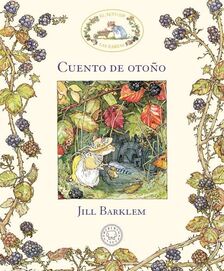
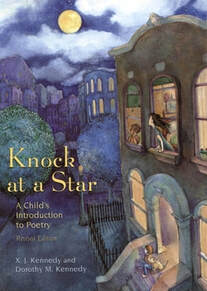
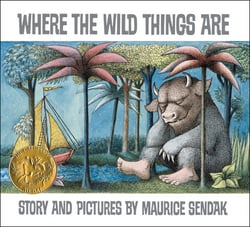
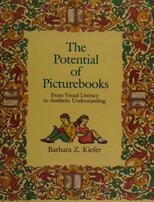
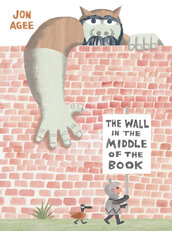
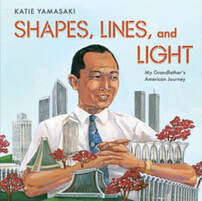
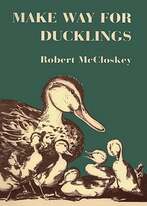
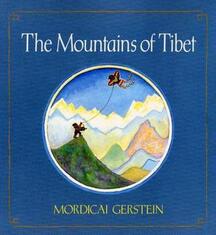
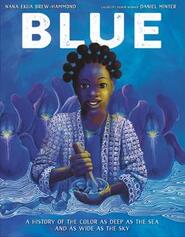
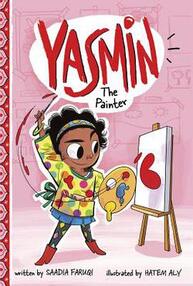
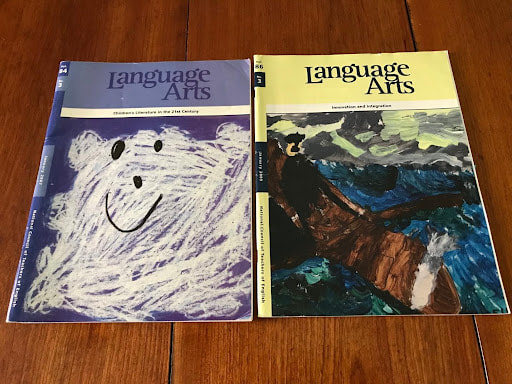
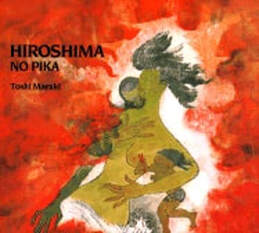
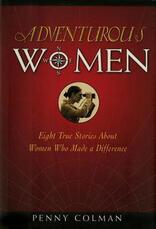
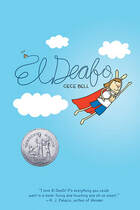
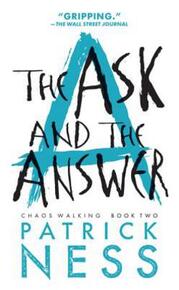
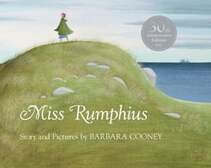
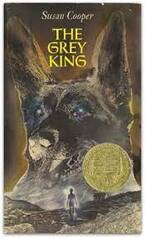
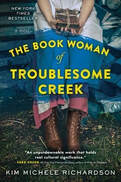
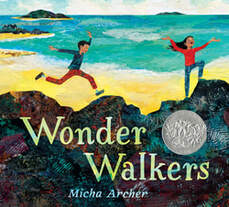
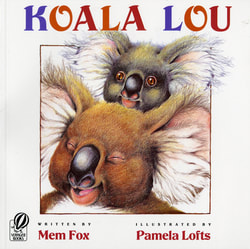
 RSS Feed
RSS Feed